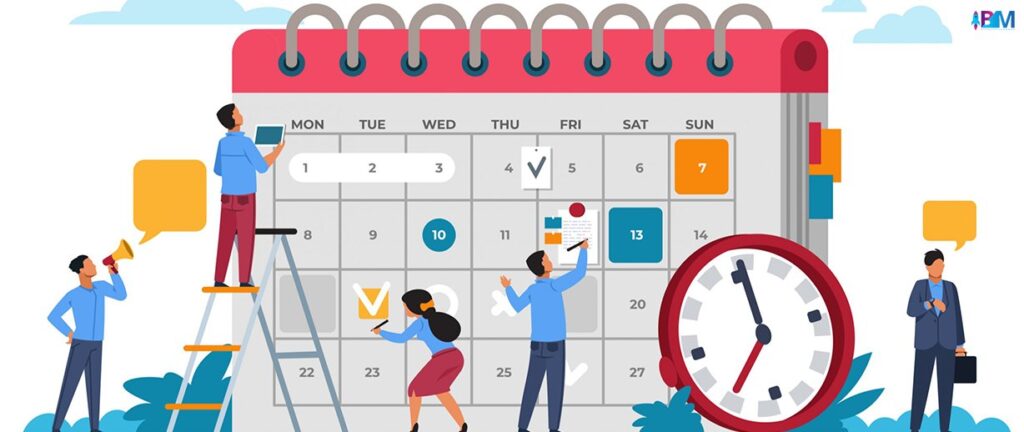We’re excited to welcome you to the ultimate guide to content marketing in 2023.
As a team of content marketing experts, we know the field is constantly evolving, and staying on top of the latest trends and strategies can be tough.
That’s why we’ve put together this guide – to help you navigate the world of content marketing and maximize your efforts.
So, what can you expect from this guide? We’ll cover various topics, from the latest content creation and distribution trends to the most effective tactics for promoting your content and building your audience.
We’ll also measure your results and optimize your strategies based on what works best for your specific goals.
Whether you’re a seasoned pro with years of experience or just starting in content marketing, this guide is for you.
It’s accessible and easy to follow, with plenty of practical tips and real-world examples to help you implement what you learn.
Why is staying up-to-date with content marketing trends and strategies so important?
The marketing world is constantly changing, and what worked yesterday might not work today.
As technology advances and consumer behavior shifts, content marketers need to be able to adapt and evolve to stay ahead of the game.
But don’t worry – this guide has got you covered.
We’ll explore the latest trends and best practices in content marketing and provide you with the insights and tools you need to succeed. So, could you grab a cup of coffee, and let’s dive in?
What Is Content Marketing?

Alright, let’s talk about content marketing!
You want to create content your target audience will love, ultimately leading to more business for you.
Content Marketing is a strategy for creating valuable, relevant, consistent content to build an audience and drive profitable customer action.
So, what kinds of content are we talking about here?
It could be anything from blog posts and social media updates to videos, podcasts, e-books, infographics, and more.
The key is to create content that aligns with your audience’s interests and needs and deliver it through their preferred channels.
Example: Let’s say you own a small business that sells healthy foods for fitness enthusiasts. Your target audience might be health-conscious individuals looking for natural and eco-friendly alternatives to traditional skincare products.
To reach this audience, you could create blog posts about the benefits of healthy foods, post social media updates highlighting your products and their ingredients, and create how-to videos showing people how to use your products effectively.
The idea is to provide your audience with valuable information that helps them solve problems, learn new things, or feel entertained or inspired.
This is the beauty of content marketing, where you mostly rely on value creation.
Plus, it allows you to be creative and have fun with your marketing efforts, making the process more enjoyable for everyone involved.
Read More: The Benefits of Blogging for Business
Benefits Of Content Marketing
So, now that we know what content marketing is let’s talk about why it’s so great. Here are some benefits of content marketing that you might find interesting:
- Builds Brand Awareness: Creating valuable and shareable content can help your brand get noticed by a wider audience. You can attract people who might not have heard of your brand by providing helpful information or entertainment.
- Establishes Your Brand As A Thought Leader: By providing valuable insights and information, you can establish yourself as an expert in your industry. This can build trust with your audience and make them buy from you.
- Increases Website Traffic: Creating and sharing content can drive more traffic to your website. This can help improve your search engine rankings.
- Generates Leads: By offering valuable content in exchange for contact information, such as an email address, you can generate leads and build your email list. This can help you nurture relationships with potential customers and eventually convert them into paying customers.
- Improves Customer Retention: By providing ongoing value to your existing customers through content, you can improve customer loyalty and retention. This can lead to more repeat business and word-of-mouth referrals.
- Cost-Effective: Content marketing can be a more cost-effective way to reach your audience than traditional advertising methods. While it does require time and effort to create content, it can have a longer lifespan and generate more ROI over time.
Types Of Content Marketing

Content marketing is an umbrella term that has numerous facets to it.
When it comes to content marketing, there are many different ways to reach your audience.
Here are some of the most popular types of content marketing to consider:
- Blog Posts: Blogs are a great way to share your thoughts, knowledge, and expertise with your audience. You can write about anything from industry news, how-to guides, and personal stories. The key is to provide value to your readers and keep them engaged.
- Social Media Posts: You can use social media platforms to promote your blog posts, showcase your products or services, or simply connect with your audience.
- Infographics: Infographics are a visual way to present information and data clearly and concisely. They are great for sharing on social media or embedding your blog posts.
- Videos: Videos are a popular type of content marketing that you can use to entertain, educate, or promote your brand. You can create product demos, and how-to videos, or even share a behind-the-scenes look at your business.
- Podcasts: Podcasts are a great way to share your knowledge and expertise with your audience in audio. You can cover a variety of topics and invite guests to share their insights as well.
- E-books: E-books are longer-form pieces of content that provide in-depth information on a particular topic. They are great for lead generation, as you can offer them in exchange for email addresses.
- Webinars: Webinars are live or recorded online events that allow you to connect with your audience in real-time. You can use them to educate your audience, promote your products or services, or answer questions.
Developing A Content Marketing Strategy
Before you actually create the content, you must have the plan handy!
1. Goals And Objectives

Let’s imagine that you have created a blog, but you don’t know the exact purpose.
Setting goals and objectives is crucial. It helps you stay on track, measure progress, and achieve your desired outcomes.
The first step is to identify your target audience. Who are they? What do they need? Knowing your audience allows you to create content that resonates with them and meets their needs.
Next, you need to determine your key performance indicators (KPIs). These are the metrics you will use to track progress toward your goals. Some common KPIs for content marketing include website traffic, social media engagement, email open rates, and conversion rates.
Now it’s time to set SMART goals. These are goals that are Specific, Measurable, Achievable, Relevant, and Time-bound. For example, a SMART goal might be achieving an 8X increase in website sales within 6 months.
Finally, make sure you know the KPIs well and make adjustments as needed. Remember, setting goals and objectives is just the first step.
You need to continually review and refine your strategy to ensure it aligns with your business objectives and meets the needs of your audience.
2. Research And Analysis

Research is something that sets your content apart from others. Here are some tips on how to do your research:
- Start With Your Audience: To create content that resonates with your target audience, you need to understand who they are, what they care about, and what they need. Conduct surveys, focus groups, and social media listening to gain insights into your audience’s preferences and pain points.
- Analyze Your Competition: Take a look at what your competitors are doing. What kind of content are they creating? What channels are they using to distribute their content? Identify gaps in the market that you can fill with your own unique content.
- Keyword Research: Use tools like Google Keyword Planner (or other paid tools) to identify relevant keywords and topics for your audience. This will help you optimize your content for search engines and increase your visibility online.
- Industry research: Keep up-to-date with industry trends and news. Follow thought leaders in your industry, read industry publications, and attend conferences and events to stay informed and up-to-date.
- Analytics: Use analytics tools like Google Analytics to track the performance of your content. Identify which pieces of content are performing well and which ones need improvement. Use this data to inform future content creation and distribution.
3. Creating A Content Calendar

Pay attention! This is something most people overlook.
Creating a content calendar is essential to any successful content marketing strategy. It helps you stay organized, plan, and ensure consistency in your messaging.
Here are some tips on how to create a content calendar:
- Start By Identifying Your Goals: What do you hope to achieve with your content marketing strategy? Would you mind increasing website traffic, generating leads, or improving brand awareness? Your goals will help guide your content creation and distribution.
- Choose Your Content Types: What content do you want to create? Blog posts, social media posts, videos, infographics, or something else? Determine what types of content will resonate with your target audience and meet your objectives.
- Determine Your Publishing Schedule: How often will you publish new content? Daily, weekly, or monthly? Choose a schedule that is realistic and manageable for your team.
- Use A Template: A content calendar template can help you stay organized and ensure you don’t miss any important deadlines. You can find free templates online or create your own using tools like Google Sheets or Excel.
- Plan Ahead: Use your goals and publishing schedule to plan your content in advance. This will ensure you have a steady stream of content to share with your audience.
- Be Flexible: Your content calendar should be flexible enough to accommodate changes and unexpected events. Leave room for last-minute content ideas or updates to your publishing schedule.
Creating Quality Content
And you’re on the verge of learning something that doesn’t need any introduction. Content…Content…and Content.
So what’s the first step of creating brilliant content?
1. Choosing A Content Type
You can’t create content on random topics.
No matter how good your content creator is, you need topics that resonate with your audience.
- Revolve Your Content Around Your Audience’s Pain Points: What do they expect from you? What bothers them the most? Choose topics that are relevant and valuable to your audience, and put in the effort to make them high-quality.
Mix It Up:
- Don’t just stick to one type of content.
- Mix it up with blog posts, videos, infographics, and other formats to keep things interesting for your audience.
- Make an ecosystem around your content creation journey.
- Data-Driven Topics: If you know the landscape well, you know that data sharing topics are evergreen. Example: 30 content marketing statistics you must know in 2023. Topics of this kind bring the most traction to your table.
- Experiment: Don’t be afraid to try new things. Test different content formats, topics, and channels to see what works best for your audience.
2. Writing Quality Content
Writing quality content is essential to a successful content marketing strategy. Here are some tips on how to write quality content that engages your audience:
- Keep It Original: Spun content is a big no-no. Your content should be original and offer a unique perspective on the topic at hand.
- Use A Conversational Tone: Write in a way that feels natural and approachable to your audience. Avoid using jargon or overly technical language.
- Keep It Concise: Short sentences and paragraphs make your content easier to read and understand. To break up long blocks of text, use subheadings and bullet points.
- Provide Value: Your content should offer something of value to your audience. Whether it’s information, entertainment, or inspiration, make sure your content benefits your readers.
- Use Storytelling: People love stories. Use anecdotes, examples, and narratives to make your content more engaging and memorable.
- Use Visuals: Visuals can help break up text and make your content more visually appealing. Consider using images, infographics, or videos to complement your written content.
- Edit And Proofread: Typos and grammatical errors can undermine the credibility of your content. Be sure to edit and proofread your work before publishing it. Be sure to edit and proofread your work before publishing it.
3. Optimizing Content For Search Engines
You have to produce Search engine-friendly content to ensure your videos get the optimum reach.
- Use Relevant Keywords: The simplest yet most effective way is to Identify the keywords that your target audience is searching for and incorporate them into your content. But be careful not to overdo it – use keywords naturally and only where they make sense.
- Write Quality Content: Search engines value high-quality content that provides value to users. Write for search engines, not for your audience.
- Use Descriptive Headlines And Subheadings: Use descriptive headlines and subheadings that include your target keywords to help search engines understand what your content is about.
- Optimize Your Meta Descriptions: Meta descriptions are the snippets in search engine results. Make sure your meta descriptions are compelling and accurately describe your content.
- Use Internal Linking: Linking to other pages on your website can help search engines understand the structure and hierarchy of your content. It can also help users navigate your website more easily.
- Use Alt Tags For Images: Alt tags help search engines understand what images on your website are about. Make sure to use descriptive alt tags that include your target keywords.
- Optimize For Mobile: More and more people use mobile devices to access the internet. Make sure your content is optimized for mobile devices and loads quickly.
Distributing Content
Hurray! you’re done with your content creation. It’s time to distribute your content.
1. Leveraging Social Media

Social media is the next big thing in today’s era. And that is why you should make the most out of it.
- Create A Social Media Strategy: Create a social media strategy that outlines your goals, target audience, and which platforms you will use to distribute your content.
- Optimize Your Posts: You can optimize your social media posts for each platform. Use engaging visuals, hashtags, and concise captions that highlight the main points of your content.
- Use Social Media Scheduling Tools: Use social media scheduling tools to schedule your posts in advance and ensure your content is shared consistently.
- Engage With Your Audience: Engage with your audience by responding to comments and messages. This will help build relationships with your followers and increase engagement.
- Use Paid Social Media Advertising: Consider using paid social media advertising to promote your content to a larger audience. Use targeting options to reach your target audience and maximize your return on investment.
2. Leveraging Email Marketing

You may be thinking that emails are outdated. But that’s not the reality. Email marketing works wonders, provided you know the best practices.
Firstly, it’s important to have a quality email list. This means only emailing subscribers who have opted-in to receive your emails. This will ensure that your emails are opened and read.
Using an email marketing platform is also important. This will help ensure that your emails are delivered and allow you to track your campaign’s success.
Ensure your subject lines are engaging so your subscribers can open your emails. Use visuals like images, videos, and infographics to make your emails more visually appealing and to break up your content.
Personalizing your emails can also increase engagement. Use personalization tags to address your subscribers by name and tailor your emails to their interests.
Finally, test and optimize your emails to see what works best. Try different formats, subject lines, and content to see what resonates best with your subscribers. Use the data to make improvements to your emails for better engagement.
3. Leveraging Paid Advertising

The perk of leveraging paid ads is that they get you quick results.
- Choose Your Platform: There are many different platforms you can use for paid advertising, including Google Ads, Facebook Ads, Instagram Ads, LinkedIn Ads, and more. You have to be smart enough to choose the platform that best suits you. Do your research and determine the platform where your audience engages most.
- Set Your Budget: Determine how much you will spend on your advertising campaign. This will help you determine which advertising options are feasible for your business.
- Craft Compelling Ad Copy: Write ad copy that is both attention-grabbing and informative. Remember that the copy should match the platform’s guidelines and fit within the character limit.
- Create Eye-Catching Visuals: Use images, videos, or graphics relevant to your content and visually appealing. Make sure your visuals align with the messaging in your ad copy.
- Monitor Your Campaign And Adjust As Needed: Keep a close eye on your campaign’s performance and adjust it as needed. Analyze the data to see what’s working and what’s not and make improvements accordingly.
Measuring And Analyzing Results
Like any other digital marketing campaign, content marketing requires a clear understanding of your strengths and weaknesses. Let’s figure out how you can analyse your campaign.
1. Setting Up Tracking Tools

Below are some steps to help you set up tracking tools:
- Choose Your Tracking Tools: Some popular options include Google Analytics, HubSpot, and SEMrush. Choose the tool that aligns best with your goals and budget.
- Set Up Tracking Codes: Once you’ve chosen your tracking tool, set up tracking codes on your website and landing pages. This will allow you to track user behavior, such as page views, bounce, and click-through rates.
- Create Custom Dashboards: Custom dashboards can help you monitor your performance metrics in real time. Set up a dashboard with the most important metrics for your goals.
Analyze The Data:
- Use the data you collect to analyze your content marketing efforts.
- Look for trends and patterns to see what’s working and what’s not.
- Using this information, you can formulate an effective content marketing strategy.
- Make Improvements: Based on your analysis, improve your content marketing strategy. This could mean creating new types of content or optimizing existing content for better performance.
2. Analyzing Metrics

Analyzing metrics is a crucial step in measuring the success of your content marketing efforts.
Here are some steps to help you analyze metrics:
- Identify Your Key Metrics: Start by identifying the most important metrics to your goals. This could be anything from website traffic to social media engagement. Make sure your metrics align with your goals and are measurable.
- Analyze Your Metrics: Look for trends and patterns in your data. Are your metrics improving or declining over time? Identify which types of content are performing best and which are underperforming.
- Consider Your Audience: Consider your target audience and how they engage with your content. Are there certain types of content that resonate more with them?
Use Data To Make Informed Decisions:
- Use your collected data to make informed decisions about your content marketing strategy.
- If certain types of content are performing well, consider creating more of that content.
- If a particular channel isn’t performing well, consider shifting your focus to other channels.
- Adjust Your Strategy: Based on your analysis, adjust your content marketing strategy accordingly. This could mean creating new types of content or optimizing existing content for better performance.
3. Refining Content Strategy

Your content marketing efforts are essential for refining your content strategy.
Here are some steps to help you refine your content strategy:
- Identify Areas For Improvement: Are there certain types of content that are underperforming? Does your audience need to be more engaging with your content as much as you’d like?
Analyze Your Metrics:
- Use tracking tools like Google Analytics, HubSpot, and SEMrush to analyze your metrics.
- Look for trends and patterns in your data.
- Identify which types of content are performing best and which are underperforming.
- Refine Your Goals: Based on your analysis, refine your goals for your content marketing efforts. This could mean adjusting your target audience or focusing on specific channels.
- Develop A Plan: Develop a plan for refining your content marketing efforts. This could mean creating new types of content or optimizing existing content for better performance. Make sure your plan aligns with your refined goals.
- Implement Changes: Implement the changes you’ve identified in your plan. This could mean creating new types of content, optimizing existing content, or shifting your focus to different channels.
- Continuously Analyze And Refine: Continuously analyze and refine your content marketing efforts. Use tracking tools to monitor your metrics and identify areas for improvement. Refine your goals and develop new plans to continue improving your content marketing strategy.
Over To You!
As we come to the end of this guide, it’s important to remember that content marketing is constantly changing. Keeping up with the latest trends and techniques is essential to success.
You get the upper hand when creating high-quality content connecting users.
Analyzing metrics like engagement, conversions, and ROI will help you refine your content marketing strategy over time.
Ultimately, content marketing aims to build relationships with your audience and provide them with value. By putting their needs first and creating content that resonates, you can establish a loyal following and achieve long-term success.
We hope this guide has given you the knowledge to create a successful content marketing plan in 2023.
Remember to stay creative, adaptable, and open to change.
Are you ready to dominate the content marketing world? Do you need further help?
If you don’t have the time to strategize everything on your own, you can seek help from an industry-recognized content marketing agency.
Read Also:
